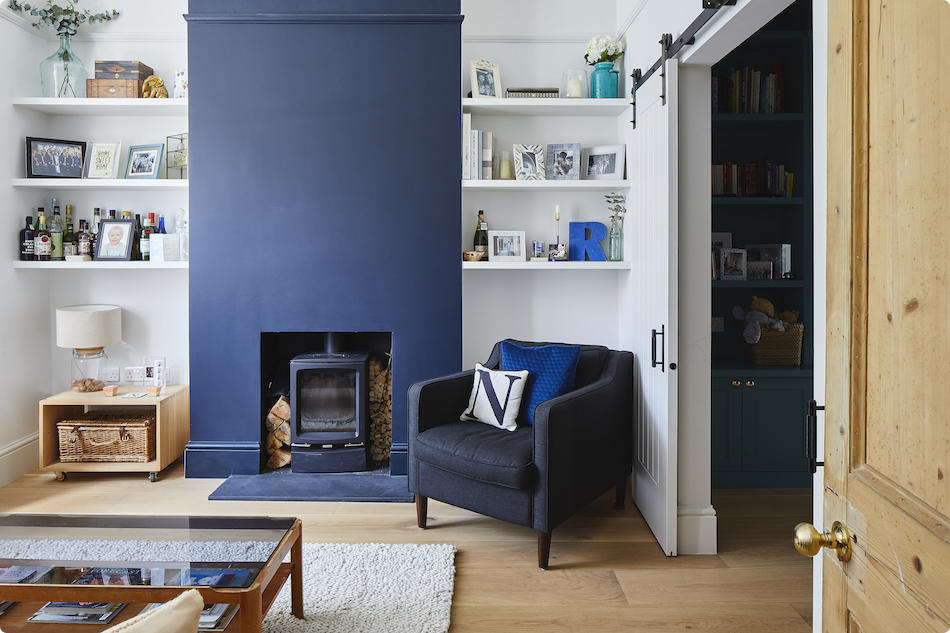As part of our Happy Homes Survey, we’re taking the results our pioneering research uncovered and showing you how to apply it to your own household.
Through our study, we have identified six key qualities to focus on if we want to create happy homes. These are…
- Secure - providing shelter, safety and stability
- Nourishing - provides healthy conditions
- Adaptable - can meet changing needs
- Relaxed - makes us feel at home
- Sociable - provides spaces to interact
- Reflective - reflecting who you are
In this article, we’ll be diving into the ‘nourishing’ quality of our homes. What exactly does this mean and what can you do to achieve it?
Creating healthy conditions in your home…
What does it mean to have a nourishing home? Have we perhaps confused homes with smoothies? Nope.
Our Happy Home report has found everyone needs a home that provides conditions that allow us to be healthy and thrive - this is what it means for a home to nourish.
Nourishing homes are well ventilated, optimise light, noise levels and are made with and contain healthy materials. They control natural and physical elements to allow us to feel comfortable at home.
However, creating such homes is more than just arbitrary checklists. Getting the right balance of sunlight, air, and insulation often needs a professional touch. If you find your space isn’t nourishing your family, consider these tips from our designers.
Help your home help you thrive…
Our data shows that 91% of the public support government action to make it illegal for landlords to rent a home that is unfit for human habitation. However, despite this, a recent study by charity Citizens Advice found 50% of landlords don’t know or understand their legal obligations, leaving many renters living in homes with mould and inoperative smoke alarms. To avoid this, make sure before you sign your tenancy agreement that your potential new landlord is following legal space standards.
Is your home maximising on your natural light? If not, consider installing skylights to brighten up those dark corners or looking at changing your floor plan. Open-plan layouts allow light to travel from one end of the house to the other, while broken-plan can do the same but retrain distinct spaces.
Skylights out of your budget? Install sun tunnels to dark corners of your house. These tunnels, which can be installed on any roof, bring in external natural light, are easy to install, plus much cheaper than standard roof lights.
With more natural light you’ll need to consider what this will mean for your thermostat. Large glass features can create a greenhouse effect, where your home is too hot in the summer and too cold in the winter. This is where double (or triple) glazing comes in, along with window treatments. We recommend solar-control treated glass to keep the sun on your side.
On the open-plan front, make sure you factor in that bigger spaces are harder to heat. Perhaps ditch the radiators for under-floor heating? Or keep what heat you do have firmly in place with rigorous insulation - this should also stop your bills from skyrocketing too. If you’re looking for the gold standard of insulation, check out the Passivhaus standard.
There may be occasions where pipework can create awkward columns in your home, all to the detriment of your floor-to-ceiling height. Exposing them, through vaulted ceilings or exposed pipes, can create a sense of a larger, more fun space while also giving you a better idea of how your home works behind-the-scenes.
Making sure you’re in control…
If you’ve ever found yourself arguing with a family member over the heating, then you know how particular we can be about home comfort.
A nourishing home should allow for different people, during different times, to feel comfortable while living there. On a basic level, this means avoiding extreme conditions, such as feeling too cold in winter or hot in the summer.
Currently, 4.9 million homes across the UK are in a non-decent condition due to inadequate heating facilities, bringing cold, damp and poor air quality into the home. This means that all year round, people are struggling to keep up a basic level of comfort - let alone being given the option to cater to varying tastes in the household.
With our climate getting more extreme, now more than ever do we need better control of our homes.

Taking control of your comfort…
You might assume good insulation will just keep your home warm in the winter, but did you know that having sufficient ceiling and roof insulation can also keep your home cool in summer? The best way to do this is to use reflective insulation on the underside of your roof coverings and bulk insulation in your ceiling.
Passive ventilation systems improve the air quality in your home while also being an environmentally smart option. The use of natural forces, such as wind and thermal buoyancy, bring in fresh air whilst also pushing the stale air out. As the system is powered by the elements, you’ll save on your building’s energy consumption, which in turn will reduce your energy costs. This form of ventilation is low maintenance and keeps the room at a constant temperature all year round.
Design your home so the windows face each other, allowing for cross ventilation when open. This will create a through-flow of air and keep it cool in the hot summers. It can be most easily achieved by having an open plan kitchen and living area, or by keeping your bedrooms in the corners of the home.
Connect more with the outdoors…
From the views outside our window, the gardens we tend, to even house plants - nature plays a significant role in our wellbeing at home.
In our survey results, we found that how satisfied we are with the views from our windows is a more significant predictor of how happy we are at home than our satisfaction with sunlight levels. This is great news for anyone looking for an excuse to look out the window and daydream.
To bring your closer to the greenery outside, consider these tips...

Going au-natural…
If opting for a rear-extension, don’t forget the importance your garden plays. Sacrificing green space for a bigger kitchen might seem like a good idea, but our research shows not only will this harm your wellbeing it could even damage the value of your home.
Stuck in London with no green space to your name? If you own your home, you might consider installing a balcony to bring in better views / a place to chill out in the sun. Even small balconies, such as Juliets, can bring a greater connection to the outdoors - plus Juliet balconies are even included in your permitted development rights.
For renters unable to access outdoor space, try getting your fingers green with some house plants. There are plenty of hardy species out there that can survive even the most neglected owner. Just make sure you give them plenty of sunshine and try to take it easy when it comes to watering. You might also consider artificial plants, whose benefits aren't too dissimilar to their organic counterparts. And for those space limited city-dwellers, you could also try applying for a local allotment plot.
Air quality is more important than ever…
There is increasing attention from policymakers and news outlets towards outdoor air pollution. However, toxic substances in the home can also impact our air quality while indoors.
To combat this, we need to look to better ventilation in our homes, systems that allow the circulation of air to remove pollutants, moisture and heat, and to improve living standards. When we’re able to fully control natural ventilation in our homes, our wellbeing has been shown to increase.
How to breath easy…
It sounds simple but just being able to open your windows for 15 mins a day can make a big difference to your quality of air. However, this only works if the air you’re letting in isn’t choked with pollutants. People living near busy roads are particularly at risk of health issues due to poor air quality. If this applies to you, the best option you might have is to invest in a quality air purifier - the best on the market can remove more than 90% of pollutants.
Be on the lookout for damp and mould. If found this will be a sign that your humidity levels are too high - a nightmare for those with asthma or a weakened immune system. The easiest way to prevent this will be to avoid hanging wet washing indoors, as well as investing in robust extractor fans in both your kitchen and bathroom.
Be cautious about using a log-burning stove. If you’re installing one, make sure you choose an eco-friendly model. This helps limit the amount of smoke produced. If you already have an older model in place, ensure you’re only using fuels that minimise on pollutants. This could be dry logs or even low-sulphur, smokeless fuels.
When building or renovating, consider what innovative materials you could use. For example, there are a growing number of natural concrete options, including mycelium made from mushroom fungi. Bio-concretes are non-toxic, meaning they absorb pollution and have the ability to trap more heat than traditional insulation.
Summary
The good news about improving the nourishment of your home is how many changes there are to make. Whether you rent or own your home, there are plenty of options out there for improving the comfort of your space. In an ideal world, we would all be in a position to adapt our homes to put our health first. However, we know that even small changes might be outside of people’s budget and power.
Being able to make these improvements is vital, not only for emotional wellbeing but for physical health too. This is why we support local authorities and home associations across the UK to help design homes that put wellbeing at the forefront.
For help unlocking your home’s potential, consider a free consultation with our team. During these calls, we can not only offer design ideas but a realistic guide to what any potential projects will entail. Book yours here.























